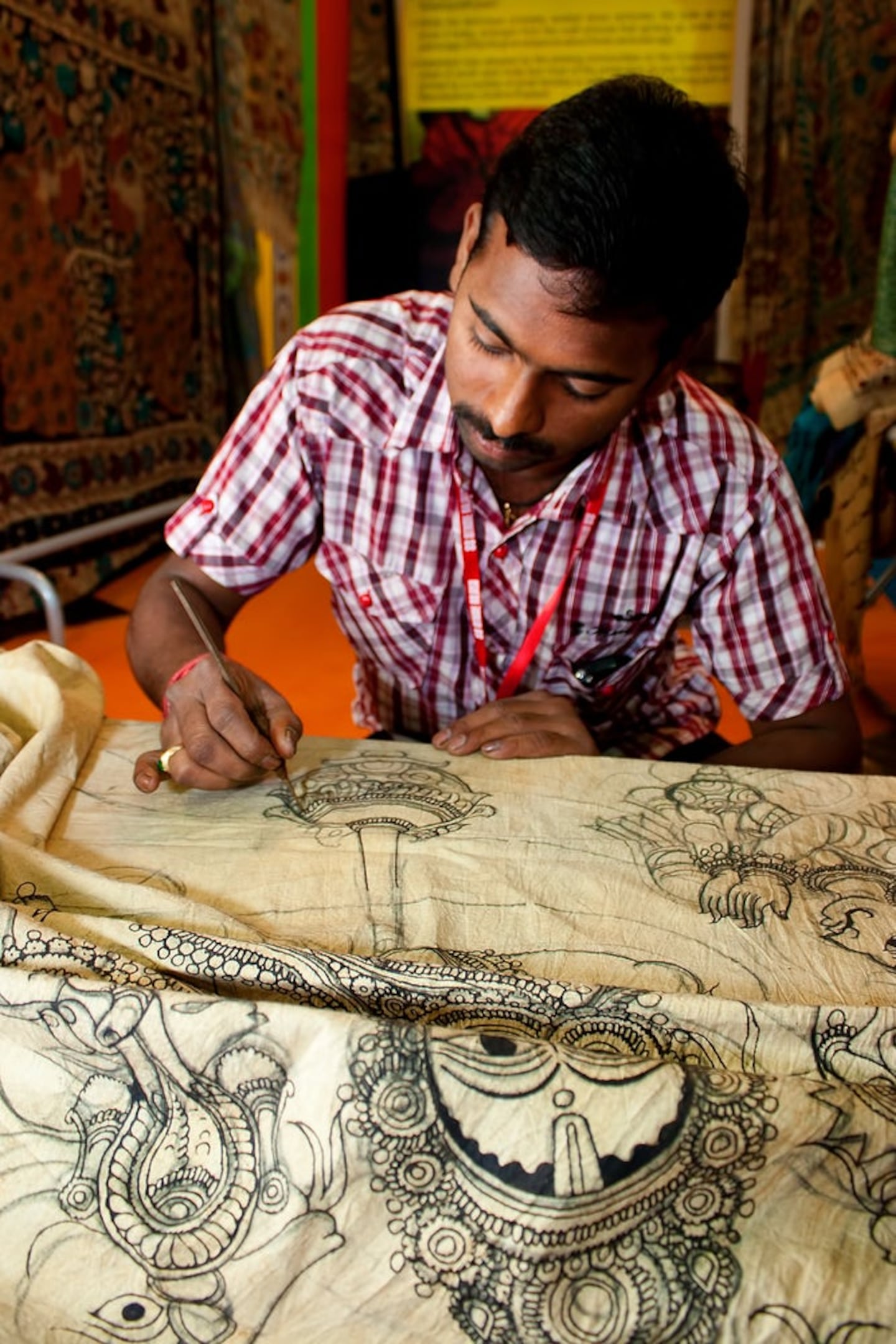
The Business of Fashion
Agenda-setting intelligence, analysis and advice for the global fashion community.

Agenda-setting intelligence, analysis and advice for the global fashion community.

MUMBAI, India — Whether its Lanvin, Gucci, Chanel or Alexander McQueen, every label worth its shine has, at one time or another, dipped into India's vast reservoir of craftsmanship. India is the most 'hand-skilled' country in the world, employing approximately 34.5 million artisans across the nation. However, this community is predominantly rural and remains largely un-corporatised. And, today, it is at risk from an increasingly ruthless economic order which rewards mechanisation and massification over made-by-hand skills and ingenuity.
A textile journey across India should be on the bucket list of any aesthete. Imagine trailing the Kalamkari artists of Machlipatnam in the Southern region of Andhra Pradesh, as they handpaint the great mythologies of India onto cloth using only natural dyes. Or, perhaps, stopping over in the quaint Gujarati village of Patan to witness the ancient art of double Ikat weaving, before heading north to Lucknow and Punjab for Chikankari and Phulkari embroidery, respectively. To see with the naked eye the intricacies of Zardozi — metal embroidery that intertwines gold and silver threads, creating extraordinary patterns and lustre — is indeed a thing of joy.
In my opinion, the answer to saving these crafts lies in a fundamental shift in perspective: recognising that there is a human being behind every handmade good. An increasing devaluation and disassociation of man from craft, process from product, is one of the biggest shortcomings of our developing world.
The use of craftspeople — weavers, embroiderers, embellishers and everything in between — is great for what it brings to people: a livelihood. In developing countries like India, Cambodia, Kenya and Indonesia, it is absolutely necessary. But how often do we hear luxury brands speak up and acknowledge the incredibly skilled creative labour that they use?
ADVERTISEMENT
In my opinion, there is a basic element missing from the global luxury narrative, which does not give credit to people in countries like India whose skills are employed season after season. We must make the real stakeholders of ‘hand-made’ more visible. And each brand has a role to play in making the luxury sector’s link to these craftspeople visible and, in doing so, we will perhaps be able to address other challenges, like measuring their environmental impact and testing methods of sustainable growth.
Donna Karan, through her work for the Haiti Artisan Project, is an ambassador for the preservation and presentation of Haiti's artistry to the western world. Maiyet is a brand committed to engaging artisans from developing communities in countries including Colombia, India, Indonesia, Kenya, Mongolia and Peru. By collaborating with different regions to create collections with indigenous textiles and techniques and then showcasing them during Paris Fashion Week, its business model debunks the fallacy that urban high fashion cannot be paired with rural craftsmanship due to quality control and other challenges along the supply chain.
In a quest to help Varanasi's handloom silk weavers gain market access, Nest, a nonprofit organization dedicated to training and developing artisan businesses, collaborated with Parisian textile show Première Vision to produce Loom to Luxury, collection of hand-loomed silks. This was then shown to luxury houses including Oscar de la Renta, Phillip Lim, Jean-Paul Gaultier and Maison Martin Margiela.
These are exactly the kind of collaborations that are needed across the world, in order to preserve craftsmanship responsibly. Design-led interventions that put craftspeople on par with designers, or at least afford them a level playing field, could bring a renaissance to the handicraft industries of the world.
Whether it’s a tiny brand like Bantuwax, which employs indigenous African craftsmen to create artisanal beachwear, or India’s Craftisan, an organisation building an online network of craftspeople, craft clusters and NGOs from across India, or even the recent opening of The Handloom School in Maheshwar, founded by textile doyenne and Stanford alumna Sally Holkar, which provides rigorous, non-traditional education for students who possess traditional weaving skills, it suddenly feels like the world is waking up to the reality that simple, sustainable solutions can drive social change for the marginalised craft community. We have to continue to find more innovative ways to champion and protect craft.
I recently visited the Hermès flagship store in Mumbai for ‘Ghadai,’ an exquisite pottery exhibition that showcased the extraordinary handicraft of the Kumbhar potters of Kutch in Gujarat. Team members from Khamir, the supporting NGO, travelled through different villages filming the artisans, compiling both their story and that of the pottery of Kutch and its 5000-year-old heritage. Importantly, it focused on the relevance of, not just the pots, but the potters.
The exhibition reminded me of my favourite poem by Keats:
"A thing of beauty is a joy for ever:
Its loveliness increases; it will never
Pass into nothingness; but still will keep
A bower quiet for us…"
Bandana Tewari is the fashion features director of Vogue India.
ADVERTISEMENT
The views expressed in Op-Ed pieces are those of the author and do not necessarily reflect the views of The Business of Fashion.
Join the discussion on BoF Voices, a new platform where the global fashion community can come together to express and exchange ideas and opinions on the most important topics facing fashion today.
From analysis of the global fashion and beauty industries to career and personal advice, BoF’s founder and CEO, Imran Amed, will be answering your questions on Sunday, February 18, 2024 during London Fashion Week.
The State of Fashion 2024 breaks down the 10 themes that will define the industry in the year ahead.
Imran Amed reviews the most important fashion stories of the year and shares his predictions on what this means for the industry in 2024.
After three days of inspiring talks, guests closed out BoF’s gathering for big thinkers with a black tie gala followed by an intimate performance from Rita Ora — guest starring Billy Porter.